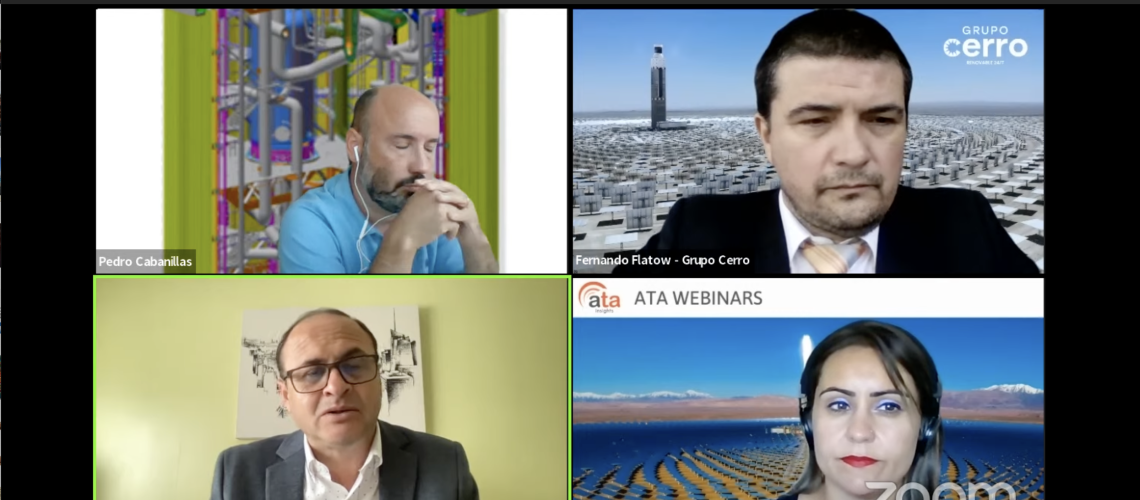- Different actors in the Concentrated Solar Power (CSP) industry analyzed the latest tenders carried out by the CNE (National Energy Commission) and how it is possible to leave fossil fuels behind
A call to the authorities to analyze the needs of the Chilean energy matrix and the attributes provided by the concentration of solar power, made the executive manager of the Association of Concentrated Solar Power (ACSP) in the webinar called “New CSP project in Chile and the future of the energy matrix”. The meeting was also presented by the head of studies and planning of the Cerro Group, Fernando Flatow, and the sales and business development manager of John Cockerill, Pedro Cabanillas, moderated by Belén Gallegos from Ata Insights.
“We hope that the authorities understand that we need a stable, flexible matrix that provides stability, just as Concentrated Solar Power does,” assured the executive manager of ACSP, referring to the last bidding process carried out in July of this year. He added that he considers that the authorities did not perceive the reality of the market, since they proposed a very low reserve price (US$40) and not in accordance with the current market situation. US$ 5 dollars less than what Grupo Cerro offered, through its Likana project.
“In the eyes of an inexperienced person, it can be said that for the value that Grupo Cerro proposed for Likana, lowering US$5 dollars could be easy, but it is not like that. It is a project that has onerous use concessions granted, environmental permits granted, it is in the process of obtaining financing, so 4 or 5 dollars could mean 200 or 300 million dollars, I do not know the flow, but it is a lot of money and a lot of risk”, assured Cristián Sepúlveda.
Adding that “neither we nor the large companies of the system award ourselves. A responsible offer was made, in which values were considered as of today, however, the authority awarded variable renewable projects with some storage medium that we still want to see specifically an open letter. If I have a project that should be in operation by 2027, I start building a year before, it was bet that in the next 4 or 5 years the operating prices would decrease, something that is not the case in our industry, we have to start build tomorrow’s value.
For his part, Fernando Flatow, the head of studies and planning at the Cerro Group, another of the exponents of this webinar, pointed out that he does not refer negatively to the development of photovoltaic energy, since “we must always keep in mind that we are speaking of an energy matrix that we want to be robust and for this we must complement different technologies, which is the most intelligent and which is the most important thing in countries like Chile, where its geography is long and thin, which has practically no international connections, therefore its stability depends clearly on internal energy development”.
The problem for Flatow is that when you take the easy step to only one type of technology, for example photovoltaic solar, which with current technology supplies electricity only during the day and to supply the system at night, you have to resort to to other non-renewable sources. “Therefore, the design of the ceiling price has to be very responsible so as not to make a tacit consortium in tenders where solar energy is injected during the day and fossil energy continues to be injected at night, we need complementarity to have a robust matrix, and that it be good, beautiful and cheap”, he asserted.
Finally, the sales and business development manager of John Cockerill, Pedro Cabanillas, invited the Concentrated Solar Power industry to prepare to respond to the requested regulatory impulse, pointing out that “we have to prepare ourselves to respond to that demand or to those potential favorable circumstances that may arise and that we are asking to occur, as they say, he who strikes first strikes twice, I launch this invitation to the industry to start having pipeline projects sufficient for the demand that could exist” .

